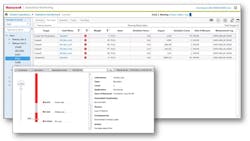Figure 1. For process plants, best practice operation means ensuring maximum yield, utmost efficiency, and minimum emissions.
At process plants, it’s important to support control engineers, optimization engineers, and operators who are implementing best practices for operational excellence aimed at meeting the plant’s business and safety goals. Personnel must monitor a wide range of measurements and key performance indicators (KPIs) from plant and equipment at a production site, as well as maintain the required values of variables to meet operating objectives such as maximum yield, utmost efficiency, and minimum emissions (Figure 1).
Operating limits
An operating envelope is a collection of constraints, boundaries, and operating limits in an industrial facility that, when exceeded, put the integrity of assets at risk and reduce the ability to meet production and efficiency goals. These limits are typically based on combinations of factors such as process unit capacity, equipment constraints, efficiency limits, and safety concerns. Depending on the urgency required to address a deviation from the limit, they will either be implemented in alarm systems or operating target monitoring systems. According to the Abnormal Situation Management (ASM) Consortium, ensuring that operations remain within correct limits is central to avoiding many of the root causes of abnormal situations.
To maximize the life of an asset in an industrial facility, it must be operated according to design parameters and not simply within process safety limits. That means extending operating strategies beyond operator visibility to the entire operations team and all those interacting with the process. Without a comprehensive limit management solution, operators lack the insight needed to run plants within operating envelope boundaries.
Industrial sites typically employ multiple types of process control applications, each of which can be used to independently enter and control respective targets, constraints, or limits. Although these applications may relate to the same process measurements, the limits they use are sometimes inconsistent or conflicting. This situation can result in inefficient operation, costly process upsets, and unplanned shutdowns.
Various groups within the plant are responsible for maintaining safe operating limit information. As these variables are often system configuration parameters entered by humans, there is the possibility values may fall outside of the safety and compliance envelope. Additionally, some processes have dynamic safe operating limits that are continually changing, which is challenging for plant operators to manage. As these limits are adjusted for safety, reliability, and optimization, staff across the facility must have current and updated exceedance reporting to effectively manage site performance.
Optimize performance
Plant owners and operators are under continual pressure to optimize their facilities and processes. This means achieving greater productivity more efficiently with fewer resources. Data about plant performance is key to making smart operational decisions, but, in most cases, operators have access only to piecemeal information about their units and processes — examining performance often in a vacuum.
Alarm rationalization
Process industry facilities typically devote considerable resources to rationalizing their alarm systems so operators can effectively manage the process and not just respond to alarms throughout the shift. Alarm rationalization involves reconciling individual alarms against the principles and requirements of the alarm philosophy. It is important that the relevant data for each alarm is documented to support the other stages of the lifecycle. This includes the alarm description, settings, causes of an alarm, consequence of no action, required operator action, response time, and consequence rating.
Figure 2. A properly designed and well-functioning alarm system is imperative to operational excellence initiatives.
Given the alarm rationalization process has the right people involved to capture all the necessary limit information to design proper alarm settings, this effort can capture limits that assist an operator to keep the process in the best operating zone. Thus, this effort should consider an operating philosophy that helps the rationalization process to identify the operating limits while setting alarm limits to avoid any rework that might occur if addressing operational monitoring after alarm management systems are redesigned. While a properly designed and well functioning alarm system is imperative to operational excellence initiatives, it isn’t enough to simply operate within alarm boundaries. Operations managers need to know if units are running in a range that will assure production plans are met while staying within limits, which include but are not limited to equipment constraints, economic targets, environmental standards, safety system regulations, and advanced process control strategies (Figure 2).
Operations monitoring
Many automated industrial plants have implemented some type of operations monitoring program. These programs provide the tools for an operations department to establish and manage engineering limits and constraints, monitor performance to plan and limits, and follow up on performance problems.
Operations monitoring is meant to address questions such as:
- Are operating plans being met?
- What are the safety, process, design, reliability, and environmental limits, and are these limits in effect consistently?
- If plans or limits are being violated, why?
- How can process performance and unit reliability be improved?
In many cases, operations monitoring programs make use of ad-hoc or stand-alone tools, such as spreadsheet applications or a combination of email and printed reports, to evaluate process variables against operating limits, conduct plant data analysis, and perform stewardship reporting.
Because personal spreadsheets are generally not subject to the same rigid control standards as other IT applications, errors and omissions can occur, impacting the accuracy of information used to develop planning targets and identify environmental constraints. Without a central data repository, different individuals may apply different data as the basis for reporting and decisions. Spreadsheets may also limit access to daily operating information for the rest of the organization. In addition, ad-hoc tools linked to plant historians can be a headache for IT to support. Spreadsheets are often inconsistently applied and difficult to keep up to date when the process or historian changes, or when the owner moves to a different job or site. Plus, they may not be well-suited to following through on problems once identified. Although an historian itself captures a wealth of vital data, plant optimization efforts will struggle without feedback from operations to put information regarding process limits, excursions, upsets, and other activity in proper context. Operations monitoring products provide the utility to capture that contextual feedback for effective reporting to plan future activities. Further, tight integration with electronic logbooks provide additional contextual feedback on a shift-by-shift basis that can assist in the phases of a project from the rationalization effort on through regular use and maintenance of the solution. Implementation of an operations monitoring functionality should consider the affected work processes and consider an electronic logbook as part of the scope of the project.
Industry applications
Operations monitoring has evolved into an ongoing process employing advanced applications to proactively leverage fewer experts — using better technology — to focus on overall performance, often with the help of external vendors and partners. The virtual environment allows the enterprise to monitor each plant in real time to achieve continuous learning and sustained improvement.
Figure 3. Operations monitoring is commonly used to evaluate process data and KPIs against planning limits.
In a typical process plant, operations monitoring can be used to monitor measured and calculated process tags against operating, safety, and corrosion limits, as well as other indications of reliability. Such engineering limits typically don’t change often and may have safety, environmental, or maintenance implications if they are violated. Another common use for operations monitoring is to evaluate process data and KPIs against planning limits. Planners frequently adjust operating ranges when production strategies, product grades, or feeds change in a process unit. These limits usually change frequently and can have economic implications. Violating planning limits can mean reduced product quality, the wrong production rate, or missed shipments to customers (Figure 3).
Operations monitoring helps automate tracking actual process performance every shift. Many plants benefit from improving how routine issues are handled, before they grow into problems. For example:
- A de-salter in a crude unit is designed to operate at up to 350 °F, but the corrosion rate increases noticeably when operated above 300 °F. Systematically tracking excursions above 300 °F and fixing the root causes of the deviations will extend the life of the equipment.
- A reboiler gradually fouls, reducing heat transfer and eventually limiting production. An anti-foulant is available but expensive, and the ideal injection rate is poorly understood. Monitoring the energy efficiency can help determine when an operator should look at the injection rate.
- A purge rate needs to be temporarily increased to remove impurities from a column. Monitoring the purge rate and the yield helps ensure the purge valve will be reset at the right time, which will prevent an undesirable loss of production.
Monitoring solutions
Plant operations departments are re-thinking their approaches to operational excellence in order to realize the maximum benefit from ongoing technology developments. In some cases, regulations and recommended practices require plants to implement a solution to assure operations are aware of operating limits and how to take action when they deviate from those limits. Instead of simply managing the effects of operating outside established boundaries, they are seeking to expose the operating envelope to all appropriate plant stakeholders and ensure it is well understood across operations and related organizations.
Technology providers have historically offered operations monitoring applications as part of an overall operations management portfolio. Too often, however, this technology required users to accommodate a large hardware footprint, complex and costly server infrastructure and licensing, and extensive programming effort. This situation drove up the cost of operations monitoring programs and forced plant engineers to rely on less-complicated homegrown monitoring techniques.
Alternative to spreadsheets
The current breed of operations monitoring solutions helps industrial organizations transition from labor-intensive, legacy plant performance spreadsheets to an automated and standardized system for facility-wide data collection, analysis, and reporting. This allows the enterprise to move beyond disjointed spreadsheets and difficult scripting languages, non-standard and inefficient processes, and inconsistent calculations requiring significant manual input.
New software tools are intended to systematically monitor process plant performance data and summarize deviations from the operating plan. These tools are well-suited for tracking operating performance against targets and highlighting problem areas. They are designed to fit into existing work processes and help operations teams institutionalize those procedures.
Data integration
Figure 4. Operations monitoring tools can be used to systematically monitor process plant performance and summarize deviations from the operating plan.
The operations monitoring infrastructure may reside at Level 3 or Level 4 of the plant network hierarchy, utilizing industry-standard OPC data access to establish connections for retrieving real-time data from historians and various other data sources. Monitoring solutions employing browser-based displays can provide plant-wide access to monitoring results (Figure 4).
A typical process plant might use an operations monitoring tool as follows:
- Engineers, head operators, and other staff meet every few weeks or months to review reports and comments entered by operators when considering updates to safe operating limits throughout the plant.
- Process data are monitored every few minutes. Any deviations outside operating limits are recorded.
- Operators enter comments about important deviations by the end of the shift.
- Monthly stewardship reports provide information such as the total number of deviations, the top 10 tags in each unit with the most problems, and the top reasons why deviations occurred.
Better decisions
Operations monitoring to enable better decision-making is a growing necessity based on current plant operational demands. Even experienced operators may not know the best operating range for throughput or may fail to realize the consequences of operating outside of targets. Furthermore, operations monitoring helps industrial facilities move to the next level of operational excellence by leveraging the inherent benefits of alarm management initiatives.
Operations monitoring benefits come from a variety of sources, including:
- reduced number and severity of incidents
- reduced operating and maintenance costs through increased asset reliability
- better safety and environmental compliance
- increased operating margins through better fidelity to the operating plan.
An effective operations monitoring solution delivers these benefits by supporting a structured, systematic monitoring program. Engineers can utilize the latest software technology to monitor process values and record anything outside of the normal range, as well as scan, filter, and consider these deviations in context. Operators and engineers can then assign reasons and comments to the deviations, while managers assess actual performance and set priorities based on associated reports. In addition, IT professionals can take advantage of operations monitoring as part of an integrated plant information system allowing them to minimize administration costs, access process data from plant historians, and reduce capital and implementation costs with a common architecture across business applications.
Conclusion
Improving operational performance and reliability requires a team effort by operators, engineers, and various other specialists within the plant. These people will benefit from operations monitoring solutions that build on alarm management efforts and improve their ability to monitor the performance of processes and operating assets to make profitable operational decisions for both the short and long term.





